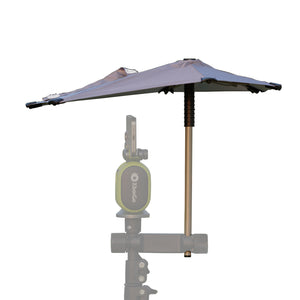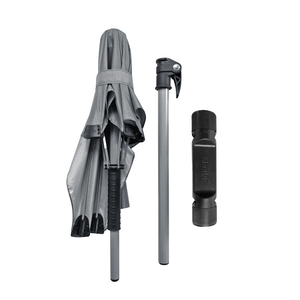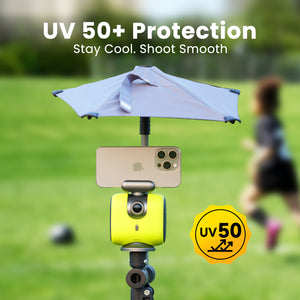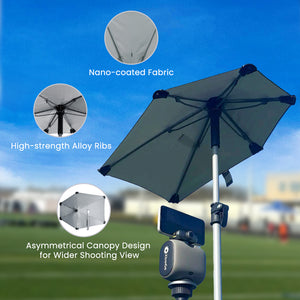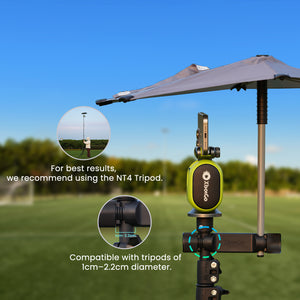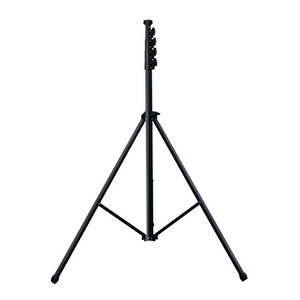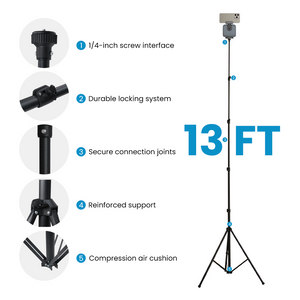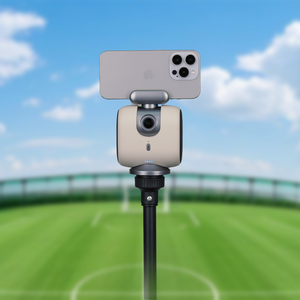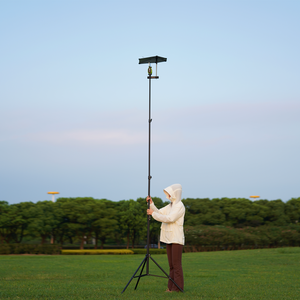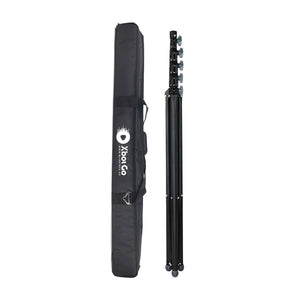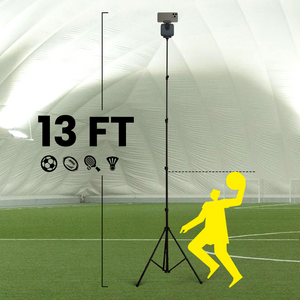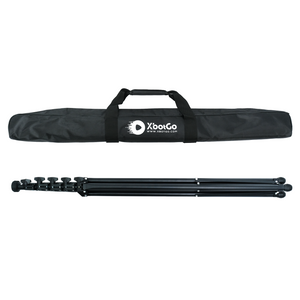¿Qué tan fríos son los partidos de hockey? Tu guía completa de temperaturas
Entrar por primera vez a un estadio de hockey puede parecer como entrar en un congelador gigante. Pero la verdad es que, si bien los partidos de hockey son fríos, no son insoportablemente fríos. La mayoría de los estadios de la NHL mantienen temperaturas entre 10 °C y 18 °C en las gradas . Con la preparación adecuada, estarás cómodo durante todo el partido.
Ya sea que te dirijas a un enfrentamiento de la NHL, a un partido de ligas menores o al torneo de fin de semana de tu hijo, esta guía cubre todo lo que necesitas saber para mantenerte abrigado mientras disfrutas de la acción en el hielo.
Comprender las temperaturas de los estadios de hockey
La ciencia detrás del frío
Las pistas de hockey deben mantenerse frías por una razón muy sencilla: el hielo. La superficie de juego debe permanecer congelada a aproximadamente -4 °C (24 °F) para garantizar un patinaje fluido y un movimiento constante del disco. Si la temperatura del aire sube demasiado, el hielo se ablanda, creando charcos y rebotes impredecibles que pueden arruinar el partido.
Este ambiente frío no solo se trata de comodidad, sino que es esencial para la seguridad y el rendimiento de los jugadores. El hielo blando provoca velocidades de patinaje más lentas y aumenta el riesgo de lesiones por caídas inesperadas o movimientos bruscos.
https://www.youtube.com/watch?v=voKKYLaBcag
Diferencias de temperatura entre estadios profesionales y locales
El tipo de recinto que visites marca una gran diferencia en tu experiencia:
Estadios de la NHL y estadios profesionales:
- Mantenido a 58-65°F (14-18°C)
- Sistemas avanzados de control climático
- Mejor aislamiento y circulación de aire
- Temperaturas constantes independientemente del clima exterior
Pistas de hielo locales y recreativas:
- Suelen rondar justo por encima del punto de congelación (0-4 °C).
- Sistemas de calefacción básicos o ninguna calefacción.
- Fuertemente influenciado por las temperaturas exteriores
- Puede que haya calefactores de techo en las zonas de asientos
Los estadios profesionales invierten millones en tecnología de control de temperatura. Las pistas locales operan con presupuestos más ajustados, priorizando la calidad del hielo sobre la comodidad de los espectadores. Esto explica por qué el partido de tu hijo el sábado por la mañana se siente mucho más frío que el partido de la NHL de anoche.
Cómo la ubicación de los asientos afecta tu comodidad
La experiencia a nivel del hielo
Estar cerca de la acción tiene un precio: temperaturas más frías. Esto es lo que puedes esperar:
- Asientos con laterales de cristal : Pueden sentirse tan fríos como 4 °C (40 °F).
- Primeras 10 filas : Notablemente más frías que las secciones superiores
- Detrás de las tablas : Exposición directa al aire helado
El aire frío que emana de la superficie del hielo se acumula a nivel de la pista, creando un gradiente de temperatura. Si te sientas en las primeras filas, prácticamente estás sentado en una corriente de aire frío que fluye continuamente desde el hielo.
Ventajas de la sección superior
Las leyes de la física juegan a tu favor cuando te sientas en un lugar más alto:
- Asientos del nivel 200 : 5-10 grados más cálidos que el nivel de hielo.
- Nivel 300 (hemorragia nasal) : Zona de temperatura más confortable
- Nivel Club : A menudo dispone de calefacción adicional.
El aire caliente asciende, creando un ambiente más agradable en las zonas superiores. Además, tendrás cientos de cuerpos cálidos entre tú y el hielo, actuando como una barrera térmica natural.
Selección estratégica de asientos para mayor comodidad
Para lograr la máxima calidez, considere estas estrategias de asientos:
- Las filas traseras de cualquier sección se mantienen más cálidas que las filas delanteras.
- Las secciones centrales de hielo evitan que el aire frío entre por las puertas de la zamboni.
- Evite sentarse cerca de las entradas de los túneles o de las salidas de aire.
- Las secciones de las esquinas suelen atrapar más calor corporal de los ventiladores circundantes.
https://www.youtube.com/watch?v=tURDIHoRmbA
La estrategia definitiva de capas para juegos de hockey
Elementos básicos de la primera capa
La primera capa de ropa marca la pauta para la comodidad:
Mejores opciones:
- Ropa interior térmica o ropa interior larga
- Camisetas deportivas transpirables
- capas base de lana merino
Evitar:
- Camisetas de algodón (retienen la humedad y pierden capacidad aislante cuando están húmedas)
- Camisetas interiores gruesas y voluminosas que restringen el movimiento
Una buena capa base te mantiene caliente sin añadir volumen, permitiéndote añadir o quitar capas exteriores según sea necesario.
Opciones de capa intermedia
Aquí es donde la preferencia personal se encuentra con la practicidad:
Consideraciones sobre las camisetas de hockey:
- Camisetas auténticas: Más pesadas y abrigadas
- Camisetas réplica: Más ligeras y con mayor ventilación
- Suéteres vintage: Máxima calidez y estilo
Capas intermedias alternativas:
- suéteres de forro polar
- Suéteres ligeros
- sudaderas con capucha
Si llevas la camiseta de tu equipo, elige la ropa interior térmica según el estilo de la camiseta. Las camisetas perforadas requieren capas base más abrigadas que las de tejido liso.
Flexibilidad de la capa exterior
La capa exterior debe ser fácilmente extraíble:
- Chaqueta ligera o cortavientos : Perfecta para la mayoría de los partidos de la NHL
- Sudadera con cremallera : versátil y fácil de ajustar
- Chaqueta polar : Ideal para pistas de hielo locales más frías.
- Manta de estadio : Permitida en la mayoría de los recintos
La clave está en elegir algo que puedas quitarte rápidamente si te entra el calor de los vítores o si aumenta la tensión entre el público.
Experiencias reales de los fans: Lo que realmente funciona
La realidad de la "temperatura de la sala de cine"
Muchos aficionados comparan los estadios de hockey con los cines de verano: al entrar hace frío, pero una vez que te acostumbras, te sientes a gusto. Esta analogía, popular entre algunos jugadores , describe perfectamente la experiencia. Puede que sientas frío durante los primeros 10 minutos, pero tu cuerpo se adapta rápidamente.
Factor de calor del tamaño de la multitud
La asistencia influye significativamente en la temperatura del estadio:
- Partidos con entradas agotadas : Puede hacer entre 5 y 10 grados más.
- Partidos entre semana : Suelen ser más frescos con menos público.
- Partidos de playoffs : Los más calurosos debido a los estadios llenos y la gran energía.
Cada persona genera aproximadamente 350 BTU de calor por hora. En un estadio con entradas agotadas y 18.000 aficionados, eso supone una producción de calor considerable.
Variaciones de perspectiva regional
Tu tolerancia al frío depende de tu lugar de origen:
- Aficionados de Florida : A menudo necesitan capas extra de ropa.
- Aficionados de Minnesota : Puede que solo lleven camiseta y jersey
- Quienes asisten por primera vez : Suelen ir demasiado elegantes.
La adaptación al clima local es fundamental. Si normalmente sientes frío a 60 °F, lleva ropa de abrigo adicional al partido.
Situaciones especiales y consejos profesionales
Consideraciones sobre la familia y los niños
Los niños experimentan las temperaturas del estadio de manera diferente a los adultos:
- Los niños pierden calor corporal más rápidamente debido a su mayor relación superficie/masa.
- Suelen ser menos activos que los adultos durante los partidos.
- La emoción puede hacerles olvidar que tienen frío hasta que es demasiado tarde.
Estrategias para el bienestar familiar:
- Abriga a los niños con una capa más que a los adultos.
- Lleva mantas pequeñas para cubrirte las piernas.
- Empaca guantes y gorros adicionales.
- Elige asientos de pasillo para facilitar las pausas para ir al baño o entrar en calor.
Planificación de la duración del juego
Los partidos de hockey suelen durar entre 2,5 y 3 horas:
- Primer período : Sentirás más frío mientras tu cuerpo se adapta.
- Segundo período : Generalmente se siente más cómodo después del calentamiento.
- Tercer período : Puede que necesites añadir capas a medida que te canses.
Planifica tu vestuario para toda la estancia, no solo para la comodidad al llegar.
Grabando tu experiencia de hockey
Si bien te concentras en estar cómodo durante el partido, capturar esos momentos memorables puede ser complicado cuando estás abrigado y tienes que lidiar con varias capas de ropa. Las bajas temperaturas agotan rápidamente la batería del teléfono y dificultan la grabación manual con guantes.
Aquí es donde brillan las soluciones de grabación automatizadas como XbotGo Chameleon : el sistema impulsado por IA se encarga de toda la grabación automáticamente, lo que permite a los padres permanecer abrigados y cómodos mientras capturan cada gol y parada sin perderse la acción ni comprometer su abrigo.
Información específica sobre la temperatura en cada estadio
Variaciones importantes en los estadios de la NHL
No todos los estadios de la NHL se sienten iguales:
- T-Mobile Arena (Vegas) : Se mantiene a 65 °F para los visitantes del desierto.
- Centro Bell (Montreal) : Normalmente 14 °C, más frío por tradición.
- Centro SAP (San José) : Alrededor de 17 °C, clima moderado
- Rogers Place (Edmonton) : 55 °F, más frío para los aficionados de las praderas
Los estadios más nuevos suelen tener mejor climatización que los más antiguos. En edificios históricos como el Madison Square Garden, puede haber zonas con temperaturas muy diferentes según la sección.
Realidades de las pistas de patinaje juveniles y recreativas
Las pistas de hielo comunitarias presentan desafíos únicos:
- A menudo carecen de sistemas de calefacción sofisticados.
- Puede tener paredes o aberturas temporales.
- Los suelos de hormigón conducen el frío.
- Zonas de concesión limitadas para calentarse
Muchos padres afirman que sus hijos llevan ropa de invierno completa a los partidos de sus hijos, especialmente a los entrenamientos de la mañana.
Estrategias avanzadas de confort
Preparación previa al partido
Prepárate para el éxito:
- Come algo caliente antes de salir
- Precalienta tu coche para mayor comodidad después del partido.
- Llegue 30 minutos antes para aclimatarse gradualmente.
- Usa calentadores de manos desde el principio, no después de que tengas frío.
Trucos para mayor comodidad durante el juego
Manténgase cómodo en todo momento:
- Bebidas calientes : Traiga un termo si está permitido.
- Cojines de asiento : Proporcionan aislamiento contra los bancos fríos.
- Movimiento de los pies : Flexiona los pies periódicamente
- Paseos durante el intermedio : Calienta en el pasillo climatizado.
Soluciones de confort de emergencia
Si tienes más frío de lo esperado:
- Visita las tiendas de los equipos : Suelen ser los lugares más cálidos de los estadios.
- Colócate cerca de los puestos de comida : el calor de la cocina se irradia hacia afuera.
- Únete a las zonas de pie : El movimiento genera calor
- Comprueba si hay obsequios promocionales : los equipos suelen distribuir bufandas o mantas.
Aprovecha al máximo tu experiencia de hockey
Los partidos de hockey ofrecen una emoción increíble, y la temperatura no debería impedir que los disfrutes. Recuerda estos puntos clave:
- Estadios de la NHL : Se esperan temperaturas de entre 14 y 18 °C; vístase con capas que pueda quitarse.
- Pistas de hielo locales : Prepárense para temperaturas cercanas a la congelación.
- La posición del asiento importa : cuanto más alto y más atrás, más calor.
- La duración es importante : Planifique 3 horas de exposición.
- La tolerancia personal varía : conoce tu zona de confort.
Con la preparación adecuada, te sentirás cómodo desde el inicio hasta el final del partido. Ya sea que estés animando a los profesionales o apoyando el hockey juvenil, estas estrategias te asegurarán que la temperatura no te distraiga de la emocionante acción sobre el hielo.
El frío forma parte del encanto del hockey. Acéptalo, prepárate para él y crearás recuerdos entrañables que perdurarán mucho después de que termine el partido.
XbotGo Chameleon AI Sports Camera
Capture every moment with AI-powered tracking. Perfect for coaches, parents, and athletes who want seamless footage without manual filming.







 Soccer
Soccer Basketball
Basketball Ice Hockey
Ice Hockey Rugby
Rugby











